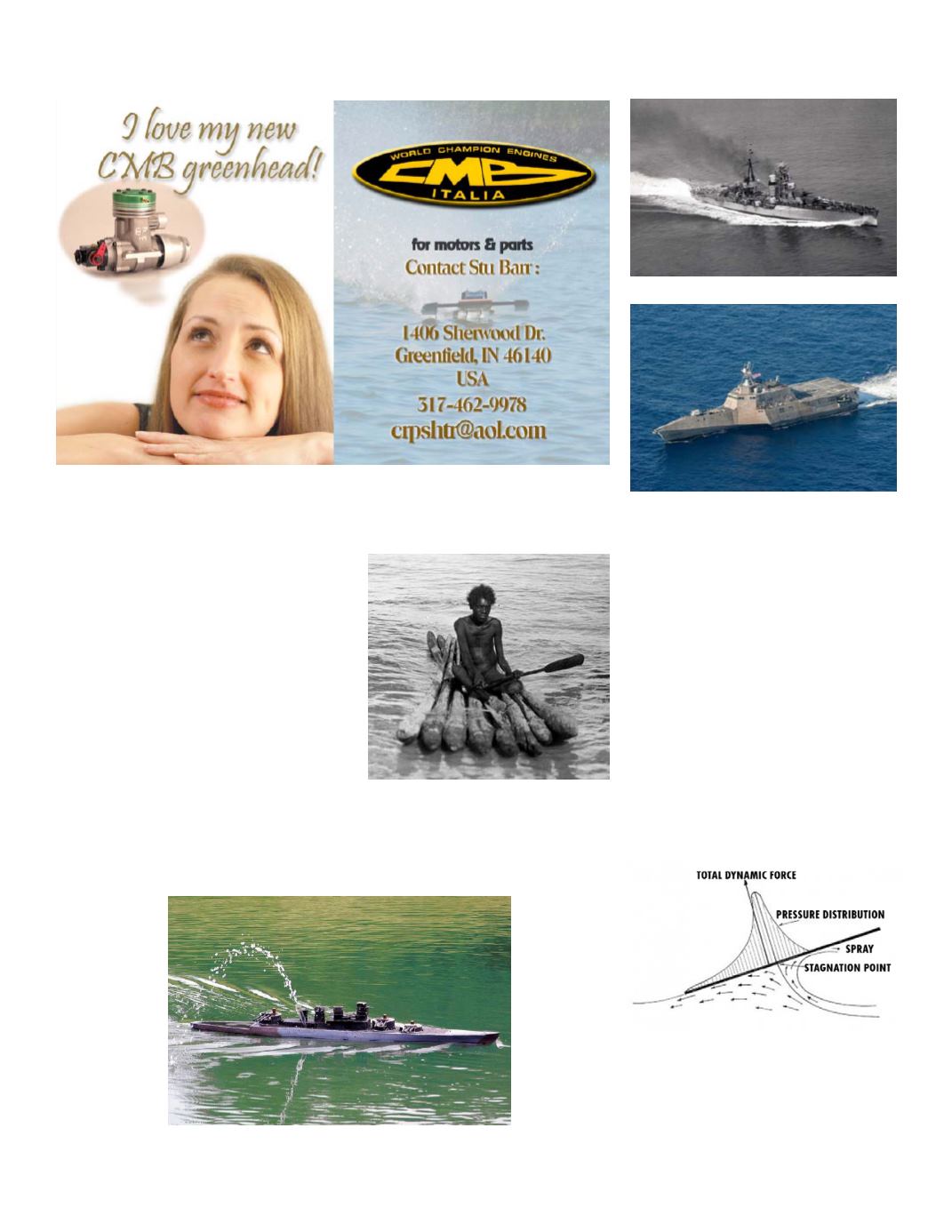
When more power is available for the
weight of the boat, the main resistance
comes from the friction of the water on
the hulls wetted surface. Wave making
resistance is very small after double the
speeds illustrated above. Since racing
boats can often go more than 10 times
the peak wave making speeds, frictional
resistance is the main issue by far. In
addition, when enough power is
available, the boat can be lifted out of
the water. This condition is created by a
small angle of the boat’s bottom to the
water, and is called planing. A planing
boat greatly reduces the wetted area
subject to friction and can go faster than
displacement hulls with the same power.
A planing hull acts like a one surface
wing. Like a wing, the planing area
gives more lift with less drag if it is wide
for the wetted length. That’s why
PROPWASH
16
October 2016
High Speed Boat Design – Part 1 - History
By Lohring Miller
NAMBA Safety Chairman
From the time humans paddled a log, people
realized how easy it was to travel by water.
Even really big and heavy objects could be
transported a lot easier by water than by land.
The problems started when people wanted to go
fast as well. The first barrier was the wave
created by the displaced water. This limited
boat speeds in nautical miles per hour to around
1.6 times the square root of the boats length in
feet. For a 4 foot long model boat the peak
wave making resistance would be at 3.6 knots
or a little over 4 mph. Only heavy electric
powered scale model transports or warships run
at these speeds. The cruiser in the picture below
would be limited to around 35 knots. Large ship
designs minimize this resistance by using long, narrow hulls. They need to be
stabilized by catamaran or trimaran layouts. The much smaller littorial combat ship
pictured can go 47 knots with a combination of a slender hull and lots of gas turbine
power. The following are pictures showing some displacement hull designs.
The earliest boat design - the raft
Wave pattern on a model warship at moderate speed
The bow wave on a cruiser at high speed
The trimaran design of a littoral combat
ship, note the smaller bow wave
Planing force diagram


